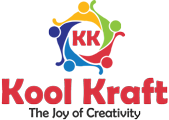Handwoven Kutchi Shawls
Vibrant and stunning, handwoven shawls have been a cultural identity for many communities of Kutch district in western part of India. The craft of weaving was evolved by the Vankars (Weavers) community during barter system in olden times, Rabaris (Shepherds) used to provide milk products, grains and wool to the Vankars and in return, weavers used to make veil clothes, skirts and blankets for Rabaris. While the rearing cattle remained the same, the motifs of weaving have developed over the period. Some wool from locally bred sheep is still used, but they also obtain silk from Bangalore, acrylic and cotton from various parts of India due to the increasing demands.
Most of the Vankars now use imported wool such as Merino wool from New Zealand and Australia to cater for growing international demands. Cotton and silk are also used to make scarves, stoles and shawls. The weavers usually dye the yarn themselves before weaving, except the tie and dye (Bandhani) shawls and scarves which require different skills for tying and dying to create various patterns. Some un-dyed yarns are also used to give the shawls natural colour of the sheep.
The basic structure of the loom remained the same, but it has developed into a more expedient model with the time. The fabric got finer with the variety of yarns available. However, the motifs remained traditional, characterizing the style statement of their origin.
The process of weaving:
Raw merino wool is converted into yarn using the spinning machine known as charkha (a small, portable, hand-cranked wheel). Once the yarns are obtained from raw wool, the individual threads of the yarn are tightened by twisting them. Thereafter the yarns are skillfully arranged into the warping frames for sizing which help to make them strong and even. Usually, 1500 threads are warped for making scarves and 3000 – 5000 threads are warped for preparing shawls.
 |
 |
 |
 |
Yarns are dyed before weaving. Organic or non-organic colours are used as per the orders. Hank of yarn is soaked in water overnight and then washed with fresh water before dyeing process. Yarns are dyed at high temperature and allowed for boiling so that it helps in absorbing the colours. Sulphuric acid is diluted and added to the solution which helps to fix colours properly and to make it durable. After that yarns are washed with fresh water and hung for drying.
 |
 |
After the dyeing process, woollen threads are taken for starch application for making warp. Some yarns undergo warping process without dyeing as per demand. Threads are soaked in wheat starch for some time and then dried in the fields early in the morning. While the yarns are drying, they are separated by a sturdy brush, then finally they are winded up on the beam.
 |
 |
 |
Woollen threads are checked to make sure there are no damages. Warped threads are attached to the weaving loom, which is known as piecing process. Wood ash is used to hold both the ends of the yarn, firmed during piecing. The threads are swirled into spindles which are used for weaving. The artisan creates special patterns by inserting the threads individually in a geometric form. Shawls and scarves are weaved in intricate designs, then adorned with mirror work and various patterns of colourful, hand embroidery.
 |
 |
 |
 |
 |
It takes about a week to make one shawl and there are a number of people involved in the whole process. The weavers of Kutch are world renowned for their distinguished art of weaving. There are more than 1000 weavers in Kutch, who solely depend on the weaving skills for their livelihood. Their products have great demand all over India, and also in foreign countries.

